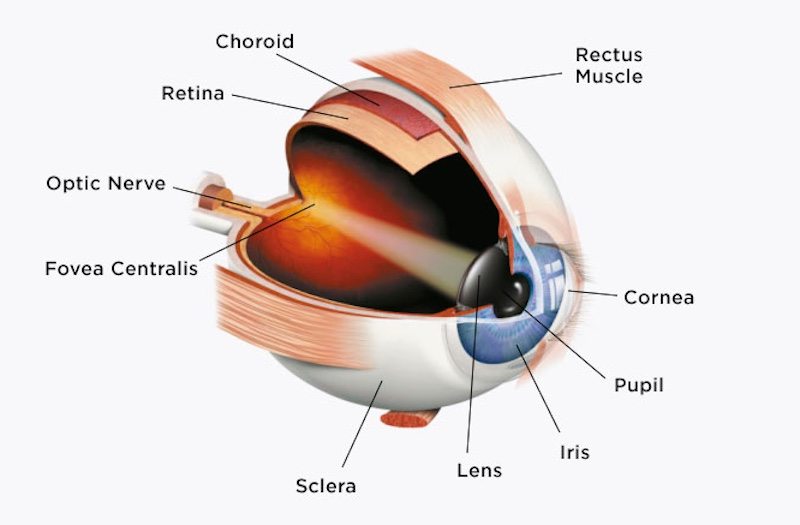Eyesight
Episode #9 of the course “How the human body works”
The body typically receives five kinds of sensory information, but it receives more visual information about the world than any other type of sensory input. Because there is so much to see in the world, the eye is a highly-developed organ made up of specialized parts that help gather information—including color, size, perspective, and light.
Vision is a collaboration between the eye, which receives visual information, and the brain, which interprets that information and makes decisions about it. Each part of the eye serves a specialized function. The tough white outer layer of the eye is the sclera, which controls the movement of the eyeball with six muscles.
Light enters the eye through the black hole in the center, the pupil, which changes size depending on the amount of light that hits it. The pupil contracts in bright light and expands in dim light, allowing just enough light into the eye for the brain to be able to see. The colored part of the eye that surrounds the pupil is the iris; it contains the muscles that expand and contract the pupil.
The cornea is the clear coating over the front of the eye that helps the eye to focus. Shaped like a dome, it causes visual information to get turned upside down. The lens, which is behind the pupil, helps to refract light, filtering it through the retina, where there are photosensitive cells at the back that will transmit the information to the brain. The two types of photosensitive cells are called rods and cones, because of their shapes. They translate the information that hits the eye into electrical impulses that are sent along the optic nerve to the brain, which then reads the impulses and flips the image the right way again. 80% of the information that the brain processes is visual information, and it’s done faster than you can think.
Share with friends

